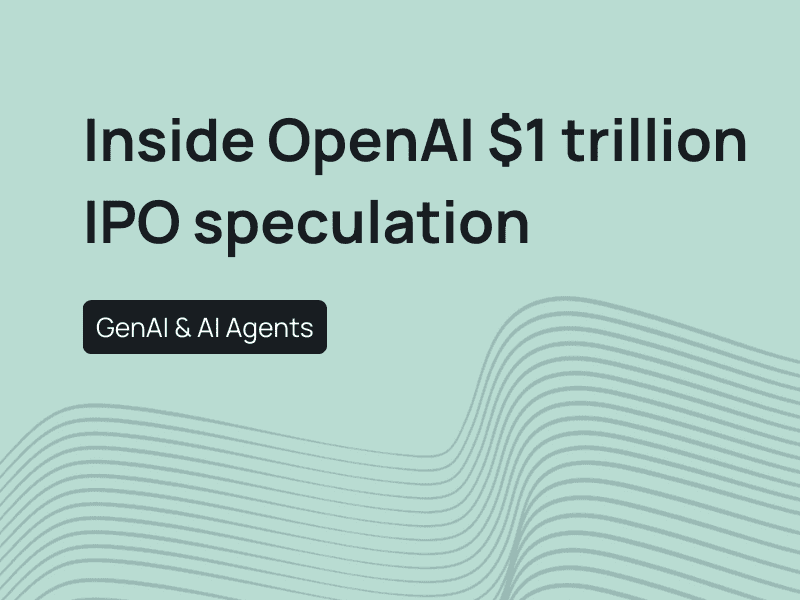The evolution of AI is breaking new ground, moving beyond single-mode processing to a more advanced and intuitive approach: Multimodal AI. Traditional AI models typically process one type of data at a time—text, images, or audio—but multimodal AI can understand and combine multiple types of information simultaneously.
The Definition
Multimodal AI is a type of artificial intelligence that can understand and process information from different sources or types of data at the same time. These sources, known as modalities, can include text, images, audio, and video. By combining these different forms of data, multimodal AI can provide a richer and more accurate understanding of information, much like how humans use multiple senses to make sense of the world around them.
The idea of multimodal AI isn't brand new. It has been developing for many years. One early example dates back to 1968 when Terry Winograd created a system that could understand instructions about moving blocks. This was one of the first instances where a machine processed more than one type of input.
In recent years, multimodal AI has made significant progress. A major breakthrough occurred in 2023 with OpenAI's GPT-4, which was one of the first models to effectively handle both text and images together. This advancement opened the door for even more sophisticated systems, such as GPT-4 Vision, which further improved how AI interacts with users.
How Multimodal AI works
Multimodal AI systems typically handle various modalities, including text (written or spoken language), images (visual data like photographs and graphics), audio (spoken words, music, and environmental sounds), video (combining visual and auditory data), and sensor data (information from devices like glucose monitors). These modalities interact through three key characteristics: heterogeneity (diverse qualities, structures, and representations of modalities), connections (complementary information shared between different modalities), and interactions (how different modalities influence each other when combined).
Multimodal AI models often employ a three-component architecture consisting of an input module (unimodal neural networks for each data type), a fusion module (processes information from all data types), and an output module (generates the final results). The architecture typically includes encoders (transform raw multimodal data into machine-readable feature vectors), a fusion mechanism (combines embeddings from different modalities), and decoders (process feature vectors to produce the required output).
Neural networks used
Transformers - Transformers are a popular architecture for multimodal AI due to their ability to handle different types of data. They divide diverse modalities into segments and analyze relationships between them, paying more attention to important parts.
Vision-Language Models - These models combine computer vision and natural language processing. For example, LLaVA consists of a language model (Vicuna-13B) and a vision model (ViT-L/14), connected by a linear layer.
Some real-world examples
- GPT-4 (OpenAI) - Processes text, images, and audio, blending different types of inputs during conversations.
- Gemini (Google) - Developed by Google DeepMind, it handles text, images, audio, and video.
- DALL-E 3 (OpenAI) - Focuses on text-to-image creation, interpreting complex text prompts to produce images with specific artistic styles.
- Claude 3 (Anthropic) - Works with text and images, excelling at understanding visual information like charts, diagrams, and photos.
Why is multimodal AI a powerful play?
The global multimodal AI market is growing rapidly, with significant expansion expected in the coming years. Valued at $1.6 billion in 2024, the market is projected to grow at an annual rate of over 30%, potentially reaching $26.5 billion by 2033. This highlights strong adoption across industries such as healthcare, automotive, retail, and financial services.
Competitive differentiation & moats
Multimodal AI creates strong competitive moats through several key factors. Companies with exclusive access to diverse, high-quality datasets can develop AI models that are difficult to replicate. Technological expertise in areas like data fusion and real-time processing also creates barriers to entry. Additionally, network effects help AI platforms improve over time by leveraging user data and feedback loops. Intellectual property, including patents and proprietary algorithms, further strengthens long-term competitive advantages.
Revenue potential & monetization strategies
Multimodal AI offers multiple revenue opportunities across various business models. SaaS is expected to dominate, with the software segment projected to hold over 65.9% of the market share by 2037, driving recurring revenue through subscriptions. Industry-specific solutions, particularly in high-value sectors like banking and finance, can command premium pricing.
Companies can also generate revenue by licensing APIs and platforms for developers, offering consulting and implementation services, and monetizing unique multimodal datasets. With 67% of enterprise tech executives prioritizing generative AI investments, the demand for enterprise-focused multimodal AI solutions continues to grow.
Risks & challenges
Capital intensity and R&D costs - Multimodal AI systems are highly computationally intensive, demanding substantial resources for data processing and model training. Companies must also invest in advanced infrastructure and data management to handle large volumes of multimodal data. Additionally, specialized expertise is needed to develop and maintain these systems, leading to higher labor costs. As competition grows, firms are increasing R&D spending to enhance their technology and stay ahead, further driving up expenses.
Regulatory and ethical concerns - Multimodal AI processes large amounts of personal data, such as voice, images, and text, which raises privacy issues. They can also inherit biases from training data, leading to potential fairness and discrimination challenges. Existing regulations may not fully address the complexities of large multimodal models, creating regulatory gaps. The World Health Organization (WHO) has stressed the importance of ethical principles in AI development. Additionally, multimodal AI systems are vulnerable to cybersecurity risks, which could compromise sensitive information and erode trust, especially in sectors like healthcare.
Market maturity and adoption timeline - Adoption may be slow due to the complexity of these systems, particularly for organizations lacking specialized expertise. Sectors like BFSI, healthcare, retail, and automotive will drive adoption, but the pace will vary across industries. Emerging applications, like real-time edge AI and human-AI collaboration, could further accelerate adoption. The timeline for widespread adoption will also be shaped by evolving regulations and ethical guidelines for large multimodal models.
The bottom line
We see multimodal AI as a powerful technology with immense potential across industries. It enables businesses to better understand and leverage diverse data types, enhancing everything from healthcare decisions to customer experiences. While the promise is strong, challenges remain, including complexity, privacy concerns, and the need for specialized expertise.
Published by Samuel Hieber


